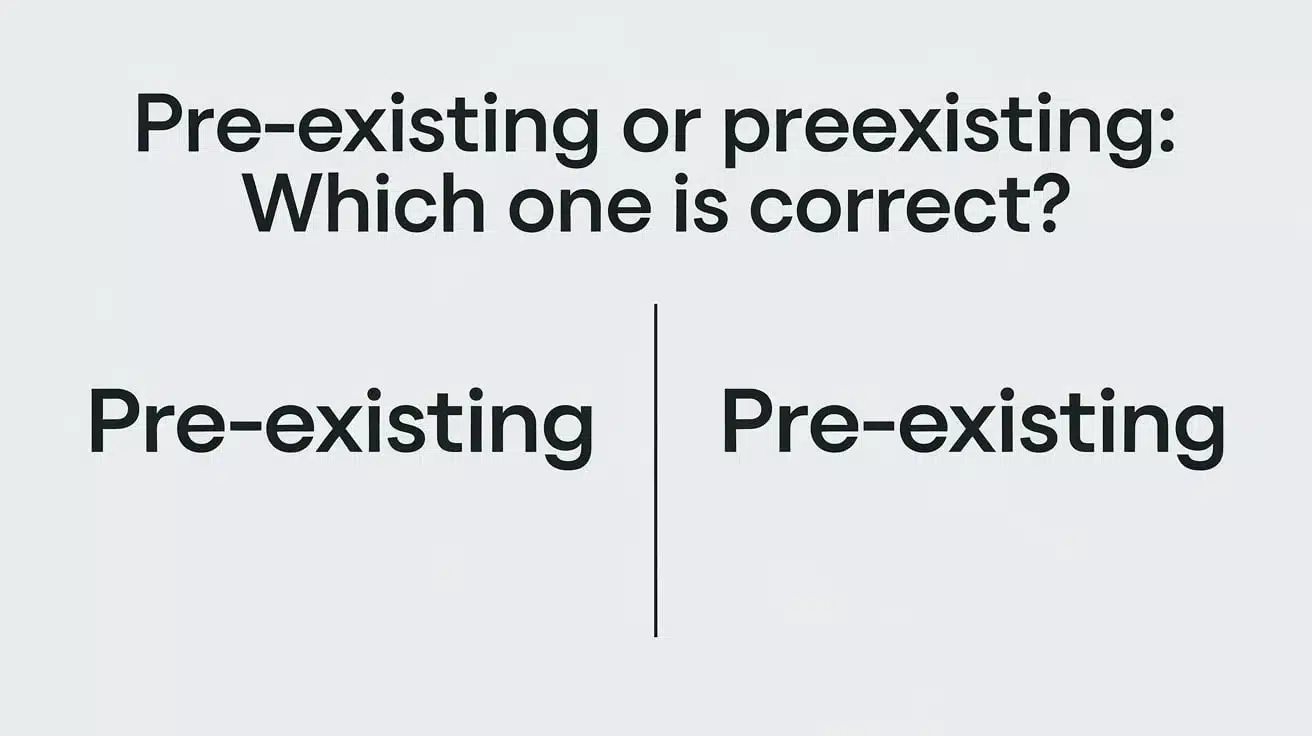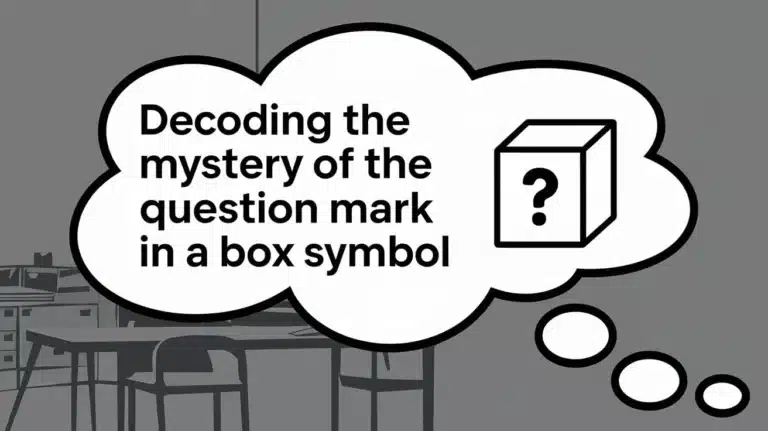Pre-Existing or Preexisting: Which One is Correct?
When it comes to the words “pre-existing” and “preexisting,” writers often wonder whether they should hyphenate or use a single, closed form. This question arises because language evolves over time, and style guides offer various approaches to words formed with prefixes like “pre-.”
In this article, we’ll dive into the meaning, historical usage, and proper contexts for each form. By the end, you’ll understand when to use each version, backed by standards, guidelines, and readability considerations that will enhance your formal writing.
Understanding the Confusion
Choosing between “pre-existing” and “preexisting” can be confusing because both forms appear in different contexts. While compound words often transition over time from hyphenated to closed forms, it’s not always clear when this shift should apply. Here, we explore the factors contributing to the dilemma.
Why the Hyphen Matters
Hyphens help clarify meaning in English, especially when using prefixes like “pre-,” which means “before.” In some cases, adding a hyphen, as in “pre-existing,” can help readers quickly grasp a term. For example:
- “pre-existing” signals a previously established state, often referring to conditions in medical, real estate, or software development fields.
- “preexisting” can look like one connected concept, but may lack clarity when introduced to new audiences or in more formal writing.
Common Misconceptions
Some people assume that unhyphenated words are simply misspellings of their hyphenated counterparts. However, in reality, both “pre-existing” and “preexisting” are acceptable forms, depending on context, style guide preferences, and readability goals.
Definition and Meaning
Understanding the definitions of “pre-existing” and “preexisting” can help clarify their appropriate usage. While both terms mean “existing beforehand,” subtle differences affect their readability and usage in formal or informal contexts.
What Does “Pre-Existing” Mean?
The hyphenated form “pre-existing” is often used to indicate something that existed prior to a current condition or state. It’s common in medical, legal, and real estate fields, where clarity is essential.
Example Use Cases:
- A pre-existing condition in healthcare refers to a medical issue that a person had before getting insurance.
- In real estate, a pre-existing structure refers to a building already on a site before new development.
What Does “Preexisting” Mean?
The closed form, or solid form, “preexisting,” has become more common in less formal contexts and in fields where hyphens are less prevalent, such as software development.
Example Use Cases:
- Software Development: Developers may describe a preexisting bug in code without needing a hyphen, as it’s understood within industry context.
- Technology: Preexisting settings in software configurations refer to those set up before the current modifications.
The closed form of “preexisting” is often used when connected words are well-established or unlikely to cause confusion.
Read More About : Decoding the Mystery of the Question Mark in a Box Symbol
Which One Should Be Used: “Pre-Existing” or “Preexisting”?
When deciding between “pre-existing” and “preexisting”, consider style guides, consistency, and audience expectations.
Style Guide Preferences
Different style guides offer varied recommendations on hyphen usage for compound words formed with prefixes like “pre-.” Let’s look at how major style guides handle this issue:
| Style Guide | Recommendation |
|---|---|
| AP Style | Prefers hyphenated form, e.g., “pre-existing” |
| Chicago Manual | Leans toward closed compounds like “preexisting” |
| MLA | Generally favors readability; encourages consistency based on context |
Most style guides emphasize readability and recommend hyphens when a closed form may lead to confusion.
Consistency Across Documents
When you choose one form, it’s essential to stay consistent within a document or project. If “pre-existing” appears in the introduction, stick with the hyphenated version throughout.
Formality and Readability
Pre-existing with a hyphen often fits better in formal writing, where clarity is critical. The hyphen helps readers parse the word more easily, especially in technical or detailed writing.
On the other hand, preexisting can fit well in more conversational, informal, or industry-specific contexts where compound words are frequently used without hyphens.
Audience and Context Considerations
Your choice may also depend on audience expectations and the field in which you’re writing:
- Medical, Real Estate, Legal: In fields requiring high precision, “pre-existing” may be preferable.
- Technology and Software: “Preexisting” without the hyphen is often seen in this industry, especially in software development.
Origins and Evolution of “Pre-Existing” and “Preexisting”
Words like “pre-existing” and “preexisting” showcase linguistic evolution over time. Here’s a look at how each form has developed.
Historical Usage
The term “pre-existing” dates back several centuries and was originally always hyphenated. This structure helped clarify meaning as English linguistically evolved and compound words became common.
In the 20th century, English gradually saw a move toward closed forms, especially with terms used frequently in everyday language. “Preexisting” began to appear more often in broader trends, particularly in informal writing.
Trends in Modern English
Today, the trend leans toward unhyphenated forms in digital and technical contexts. In fields like software development, “preexisting” is standard, demonstrating how language changes in response to technological shifts.
Usage Examples for Clarity
Below are examples to illustrate how each form might be used in sentences.
Examples of “Pre-Existing” in Sentences
- The patient disclosed a pre-existing condition before purchasing health insurance.
- An inspection was performed to assess any pre-existing damages to the property.
- The contract explicitly mentions all pre-existing liabilities.
Examples of “Preexisting” in Sentences
- The preexisting codebase was modified to support new features.
- Due to preexisting settings, the system functioned with limited customization options.
- This update addresses preexisting issues identified in previous versions.
Synonyms and Alternative Phrases
When “pre-existing” or “preexisting” feels repetitive, consider these synonyms and alternative expressions that convey a similar meaning:
| Term | Contexts for Use |
|---|---|
| Existing | General use, e.g., “existing condition” |
| Prior | Less formal, e.g., “prior condition” |
| Established | Used in professional settings |
| Earlier | Often used in past-tense contexts |
| Antecedent | Formal, used in academic or legal contexts |
Using synonyms can enhance readability while reducing repetition.
Practical Tips for Choosing Between “Pre-Existing” and “Preexisting”
When you’re unsure whether to hyphenate, these tips can help you make the best choice:
- Consult Style Guides: Refer to the relevant style guide (AP, Chicago, MLA) for specific guidance.
- Assess Readability: Use “pre-existing” if the term might be confusing without a hyphen.
- Consider Context and Consistency: For formal writing or general public documents, “pre-existing” may be preferable. For industry-specific contexts, “preexisting” may suit better.
- Use Synonyms Where Possible: Substitute terms like prior or existing when appropriate to avoid overuse.
Conclusion
Deciding between pre-existing and preexisting ultimately comes down to audience expectations, context, and style guide recommendations. For fields where clarity and precision are paramount—such as medical or real estate—the hyphenated form provides immediate clarity. In fields like software development, where language evolves rapidly, the closed form is increasingly acceptable.
By understanding the nuances of these terms, writers can make informed choices that enhance their readability and consistency. And as language changes, keeping an eye on broader trends in compound words will ensure your writing remains up-to-date and accurate.
In a world where language evolves continually, making thoughtful choices on hyphenation can contribute to clearer, more engaging content.
Certainly! Here are five FAQs that will enhance the article by addressing common questions on “pre-existing” vs. “preexisting”:
FAQ
1. Is “pre-existing” or “preexisting” more correct in formal writing?
“Pre-existing” is traditionally preferred in formal writing due to its clarity, while “preexisting” is gaining acceptance in less formal contexts.
2. Does the hyphen in “pre-existing” impact readability?
Yes, the hyphen can improve readability by clearly linking “pre” with “existing,” especially in complex or technical documents.
3. Are both “pre-existing” and “preexisting” acceptable in U.S. English?
Yes, both forms are acceptable, but the choice depends on the style guide, audience, and context. “Pre-existing” is often preferred in formal writing.
4. Which industries prefer “preexisting” without a hyphen?
In real estate and software development, “preexisting” is frequently used as a closed compound to align with industry conventions and efficiency.
5. Has the trend of dropping hyphens in compound words increased?
Yes, as language evolves, there is a broader trend towards closed compounds like “preexisting,” especially in informal contexts.







